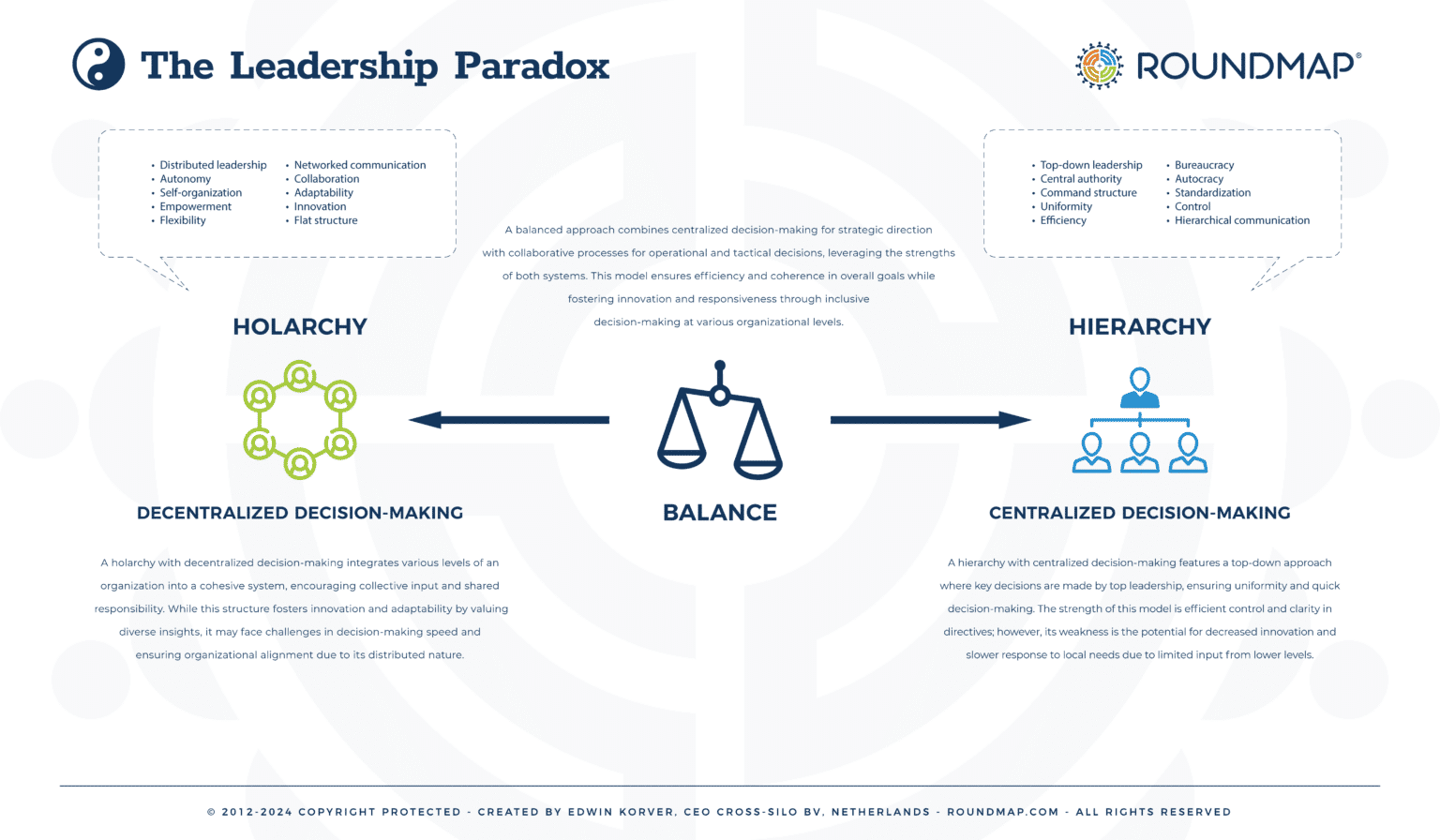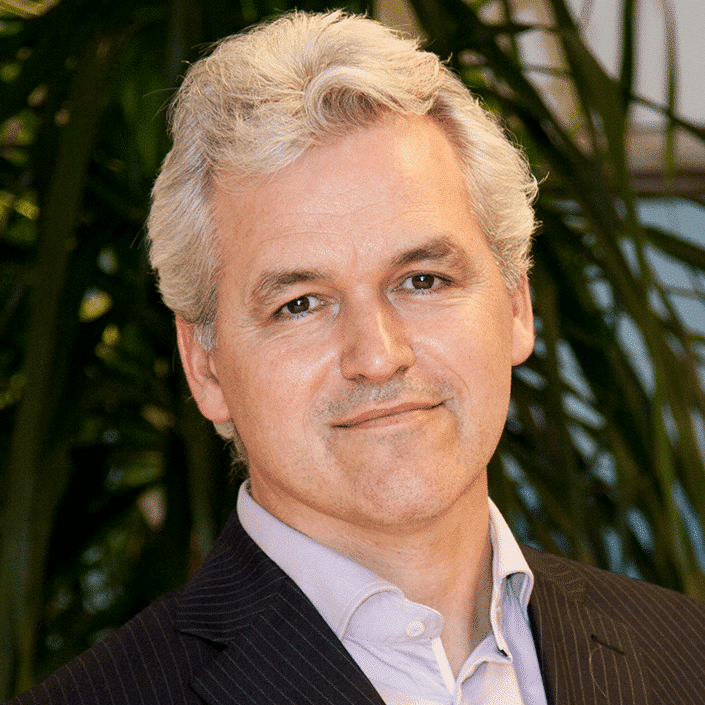In organizational design, the interplay between centralization and decentralization presents a profound paradox. While centralized command promises clarity and efficiency, decentralized leadership champions innovation and autonomy. Yet, beneath this surface tension lies a nuanced landscape of power dynamics and effectiveness.
Paradox: How can organizations navigate the Leadership Paradox by striking an optimal balance between centralized authority, which offers clarity and alignment but may overlook detailed insights and employee buy-in, and decentralized empowerment, which encourages broad input and responsibility but can lead to information overload and alignment challenges?
Navigating Hierarchy and Holarchy
- Leadership:
- Hierarchy centralizes decision-making at the top;
- Holarchy distributes leadership across levels.
- Decision-Making:
- In a hierarchy, decisions are made by upper management;
- In a holarchy, decisions are made collaboratively.
- Communication:
- Hierarchical structures often have formal, vertical communication channels;
- Holarchies encourage open, networked communication.
- Flexibility:
- Hierarchies may be less adaptable to change;
- Holarchies are designed for flexibility and responsiveness.
- Innovation:
- Hierarchies may limit innovation to top-tier decisions;
- Holarchies foster innovation through distributed input.
- Control:
- Hierarchies emphasize control and standardization;
- Holarchies value autonomy and empowerment.
- Accountability:
- In hierarchies, accountability tends to flow upwards;
- In holarchies, accountability is more distributed.
- Structure:
- Hierarchies are characterized by clear, ranked levels;
- Holarchies have a more fluid and overlapping structure.
- Efficiency:
- Hierarchies can efficiently align large organizations towards a common goal;
- Holarchies can struggle with coherence across diverse units.
- Empowerment:
- Hierarchies may concentrate power and limit lower-level empowerment;
- Holarchies empower individuals at all levels.
Leadership During VUCA Conditions
In VUCA (Volatility, Uncertainty, Complexity, Ambiguity) conditions, a holarchical approach may be more appropriate. This model’s emphasis on decentralized decision-making, flexibility, and collective insight can better equip organizations to respond swiftly and adaptively to rapid changes and uncertainties. While hierarchical models provide clear direction and control, the dynamic and unpredictable nature of VUCA environments benefits from the agility, innovation, and collaborative problem-solving intrinsic to holarchies.
Exposure to VUCA conditions varies across industries and sectors, with some naturally facing higher levels of volatility, uncertainty, complexity, and ambiguity. Industries like technology, finance, and healthcare often experience rapid changes, requiring adaptive leadership approaches. Conversely, sectors with more predictable environments might lean towards traditional hierarchical models for stability.
However, increasing global interconnectedness means that most sectors must consider aspects of VUCA in their strategic planning, emphasizing the need for flexibility, resilience, and innovation across the board.
Author
-
Edwin Korver is a polymath celebrated for his mastery of systems thinking and integral philosophy, particularly in intricate business transformations. His company, CROSS-SILO, embodies his unwavering belief in the interdependence of stakeholders and the pivotal role of value creation in fostering growth, complemented by the power of storytelling to convey that value. Edwin pioneered the RoundMap®, an all-encompassing business framework. He envisions a future where business harmonizes profit with compassion, common sense, and EQuitability, a vision he explores further in his forthcoming book, "Leading from the Whole."


